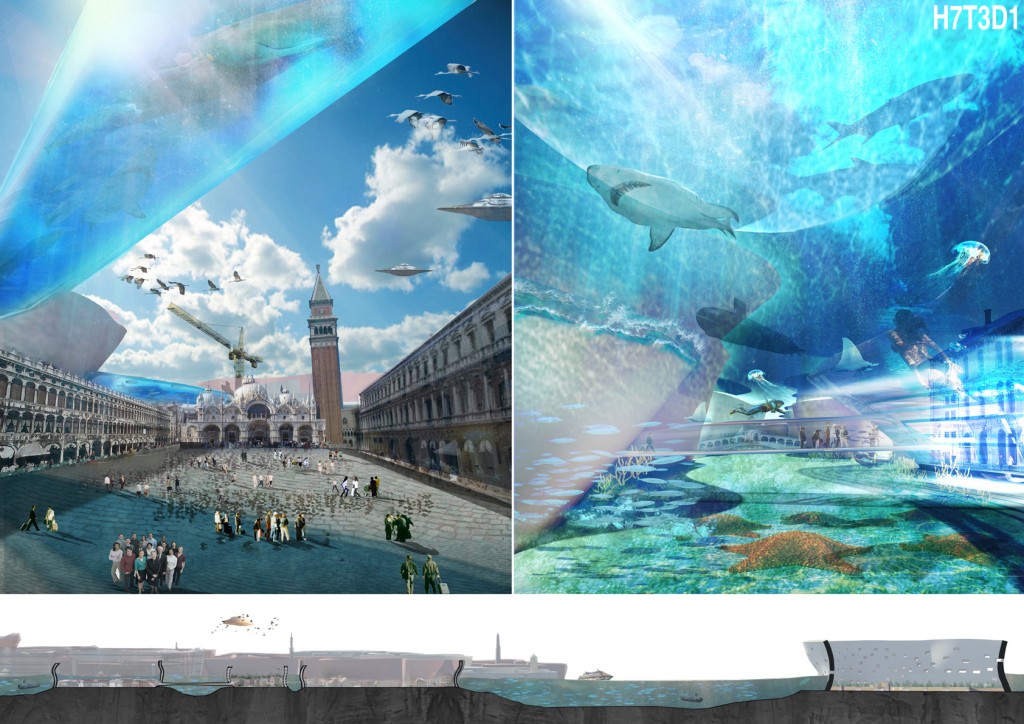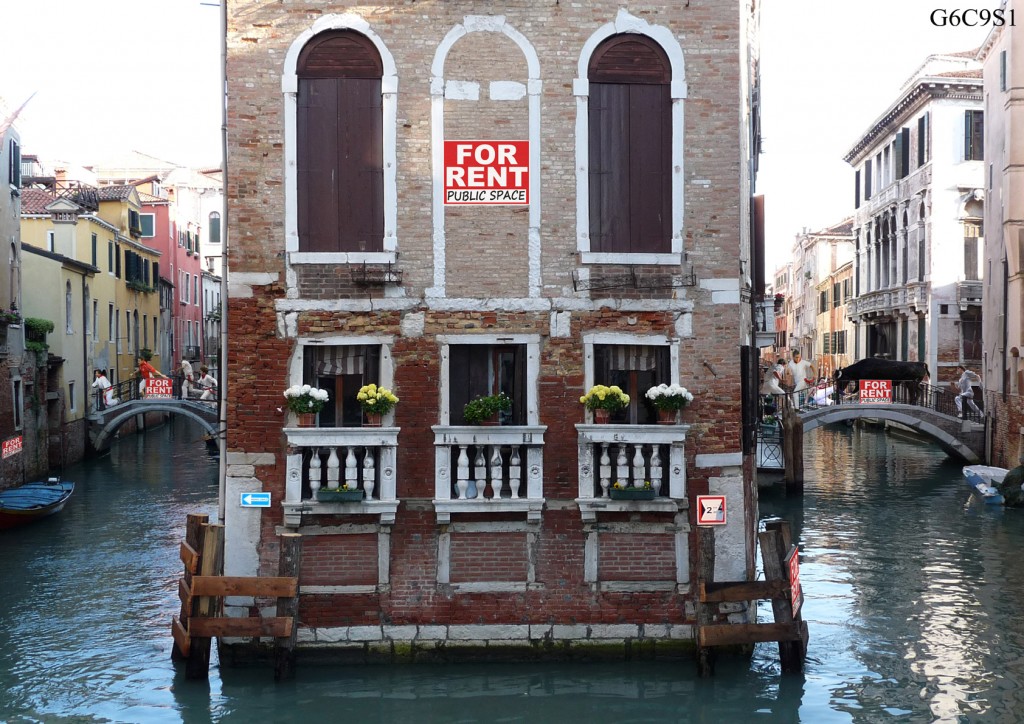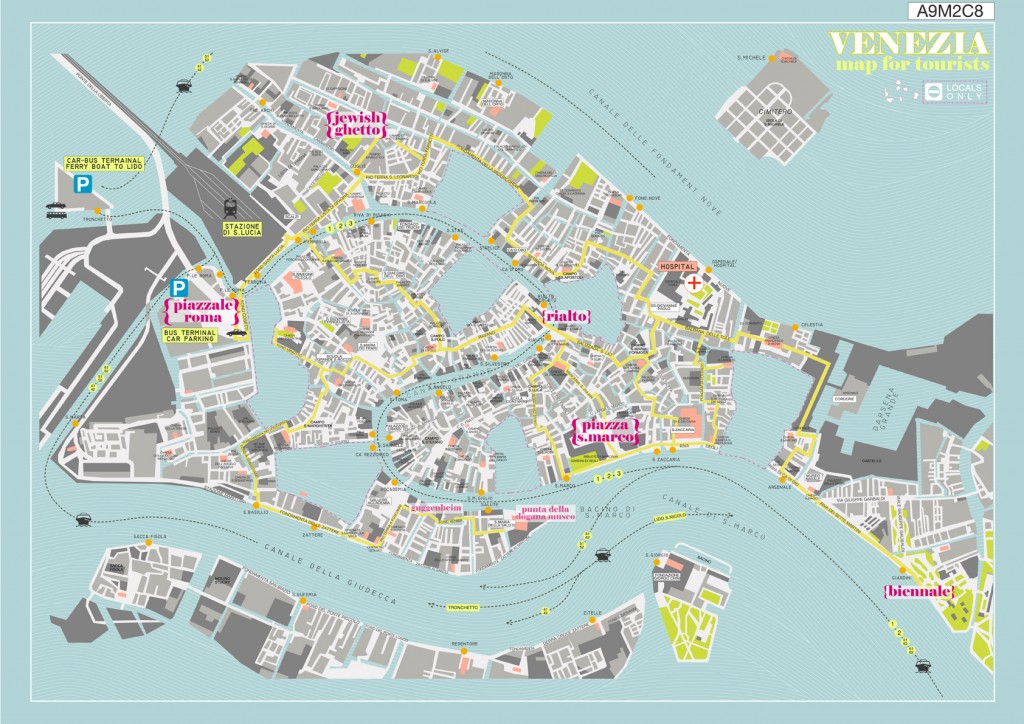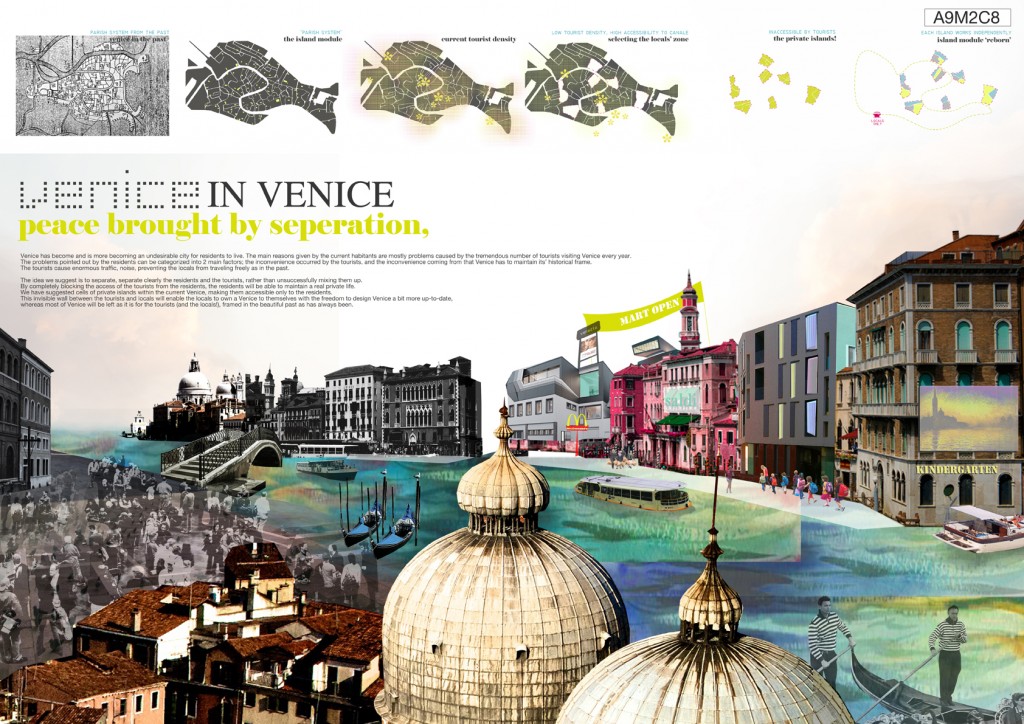Info:
Title: VENICE INSIDE VENICE - Code: A9M2C8Contest: Venice / 2011
By: Y. Shin / M. Kim
Views: 4024 Likes: 0
Votes:
BJARKE INGELS11 NERI OXMAN6 ELENA MANFERDINI3 MARIA LUDOVICA TRAMONTIN5 BOSTJAN VUGA15.2
VENICE INSIDE VENICE
VENICE INSIDE VENICE, peace brought by separation Venice has become and is more becoming an undesirable city for residents to live. The main reasons given by the current habitants are mostly problems caused by the tremendous number of tourists visiting Venice every year. Approximately 20,000,000 people visit Venice every year. This is 340 times the number of residents. Venice has undoubtedly become a city centered toward tourists, with no consideration for the actual living residents. There is no arguing that Venice needs a definite change, allowing the residents to pursue a normal life just like people in other cities.
The problems pointed out by the residents can be categorized into 2 main factors; the inconvenience occurred by the tourists, and the inconvenience coming from that Venice has to maintain its’ historical frame. The tourists cause enormous traffic, noise, preventing the locals from traveling freely as in the past. Also, Venice, a city from the past living in the present, is full with historical values that are impossible to demolish (which is the cause of tourists, around and around). Therefore, the venetians are forced to live a life in the past, with few amenities to support them, and no community life possible due to the tourists barging in
The idea we suggest is to separate, separate clearly the residents and the tourists, rather than unsuccessfully mixing them up. By completely blocking the access of the tourists from the residents, the residents will be able to maintain a real private life. We have suggested cells of private islands within the current Venice, making them accessible only to the residents. Venice was actually first built upon these kinds of islands;forma urbis. The first few islands (‘parish’) gradually filled up to a group of islands with narrow water flowing between them (canals) and before the bridges were built to connect them together, the islands were isolated from each other. Each cell had a church and a campo which was the center of each parish, and rich and poor residents lived together mixed up. This parish form is still observable even within the current dense Venice.
However, since the zone of life has increased since the past and the parishes overlap with the current tourist zones, we have chosen a few clusters of cells together that avoid the tourist zones and have united them as islands. All islands have direct access to the canale grande in order to make it easier for the locals’ transportation. The small cells in each island are all connected together, but the islands themselves are all disconnected from the outside. With no bridges or public buses taking them to these island cells, the tourists will be only able to observe these locals and not reach them. However, since Venice is inter-wined with numerous streets, all the tourist pedestrian streets are connected making it possible for the tourists to see all of Venice via foot, even with the isolated islands between them.
This invisible wall between the tourists and locals will enable the locals to own a Venice to themselves with the freedom to design Venice a bit more up-to-date, whereas most of Venice will be left as it is for the tourists (and the locals!), framed in the beautiful past as has always been.
Info:
Title: VENICE INSIDE VENICE
Time: 7 giugno 2011
Category: Venice
Views: 4024 Likes: 0
Tags: Adriatic Sea , City of Water , Grand Canal , Italy , Piazza San Marco , Scripps Institution of Oceanography , Veneto , Venice








